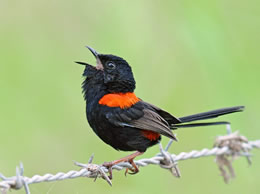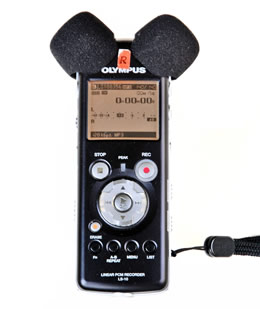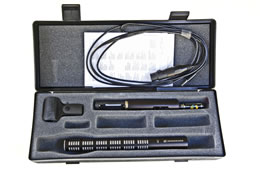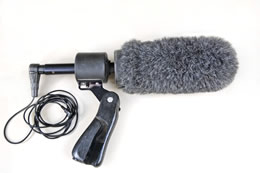Recording bird sound
The sounds of birds singing rarely fail to arouse some degree of joy or happiness in most of us and in the case of familiar sounds we almost subconsciously correctly attribute them to the rightful owners. Conversely, when we hear something strange our curiosity is naturally aroused, all part of the process of learning. But whether you learn or not depends on just how curious you are!
Birds sing or make various other sounds for all sorts of reasons, usually relating to some sort of behaviour. Most Australians know the early morning chorus of Laughing Kookaburras which is basically a territorial advertisement call and now almost part of folk lore, but how many people know that a single, long “gwaaaarrrr” from a kookaburra signals a bird of prey overhead?
The total range of sounds made by any bird is known as its repertoire. Sadly, the complete repertoire is known only for a handful of the 600 or so different Australian birds (many more if you count subspecies) and if you add to this the variations between individuals and different regional dialects our collective knowledge can only be described as miniscule.
A few outstanding field ornithologists I know can remember and identify just about any bird call they hear almost anywhere in Australia. Not only this in some cases they can even tell you whether it’s a male or a female and also what the bird might be doing. Such knowledge only results from years of experience and can be very rewarding. Even with your eyes closed you can have a pretty good idea of what’s going on around you.
One of the best ways to learn much of this is to start recording bird sound. It’s an absorbing hobby and can lead you to all parts of Australia if you wish. Alternatively if you can’t travel, you could choose to get on close speaking terms with one or two of your local birds and try to document their entire repertoires, a task that could take years with some species.
Equipment
The first step is to acquire/buy a suitable recorder and a microphone. Some recorders have built-in microphones but they are fairly basic and only useful as an emergency backup.
A wide range of recorders suitable for recording bird sound is available ranging in price from about AU$400 up to several thousand dollars. Rather than getting into detail about all of these (it’s all readily available on the internet - look at www.mineroff-nature.com as a starter) I’ll simply describe what works for me. I use a fairly simple recorder, but more importantly, a good microphone. Cheap microphones generally have poor signal to noise ratios resulting in unwanted background noise, but as a start, and correctly used, they can produce acceptable results, especially if you can get close to your subject (the essence of high quality recording) so that you don’t have to turn the input volume up too high. Cheaper directional microphones are available for less than $100.

THE OLYMPUS LS-11 RECORDER (see pic at right): This little (I mean little - it goes in my pocket) gem is capable of recording very high quality sound. It records on to inbuilt solid-state memory and also accepts SD cards. It has inbuilt microphones (only for emergency), small inbuilt speakers, runs on two AA batteries, has a tripod mount and the list goes on and on. Just Google 'Olympus LS-11' to see a heap of rave reviews, and look at a very interesting critical appraisal on listeningearth.com.au
One of the most important features for me is that the volume controls, both for microphone input and speaker sound, are old-fashioned rotating wheels, much easier to use than the push-button controls so common now on modern electronic equipment. My only gripe is that I need reading glasses to see clearly all of the info on the inbuilt screen. Fortunately, most of the time you only need to see the important stuff and this is clearly displayed. Better than this, I can operate mine in the dark simply by feel.
Now the big plus – it is available on the net for US$300 or so.

SENNHEISER K6/ME66 SHORT SHOTGUN MICROPHONE (see pic): This is a short shotgun microphone of high quality, relatively compact and easy to carry, powered by a single AA battery (important – the rarer batteries in some microphones are impossible to buy in rural Australia)
Most professional recordists use a long shotgun microphone such as a Sennheiser MKH 816 - they are slightly more sensitive, more directional and have a better signal to noise ratio so they are better at picking up more distant or softer signals, but for everyday use they are bulky and awkward to carry. They are also a lot more expensive.
Some people instead use a parabola which can employ a less expensive microphone. Parabolas are very bulky and awkward to carry and in my experience, can amplify unwanted sounds coming from behind your subject.

RYCOTE SOFTIE RYO33352 WITH MOUNT AND PISTOL GRIP (see pic): This accessory is unfortunately relatively expensive but absolutely essential when hand holding a microphone to minimise unwanted noise from both wind and handling. Sensitive microphones are quite prone to handling noise and keen recordists mount their microphone on a tripod to eliminate this – OK for recording static subjects, but birds are not always cooperative in this regard.
The microphone and Softie are currently available as a kit from Videoguys Aust, for about AU$850 posted.
A few comments on technique
The best recordings usually result from being close to your subject – you can usually turn the input volume down (try not to exceed -12 db on the level meter) and minimise other unwanted sounds coming from directly behind your subject. If you think that is a problem, try to get around the other side of your subject so that the unwanted noise is behind you. Aeroplanes and motor vehicles are the worst unwanted noises but fear not, these days it is possible to filter out such relatively low frequency noises with appropriate software on a computer. So don’t spit the dummy because of an aeroplane, go ahead and record – it can usually be deleted later on. One of the most frustrating thing about birds is that you hear them make an interesting call, grab your recorder and switch it on (remember to switch on the microphone as well!) and then what do your hear? Silence!
It is considered good practice to monitor your recording using headphones. Unfortunately I find that when wearing headphones I lose the ability to tell what direction the sound is coming from and point the microphone accordingly. On this score, ideally it is always better to keep the subject in view. It is not a good idea to record a bird you can’t see. Even if you are sure of the bird’s identity, you may not be able to document your recording fully.
Remember you can’t write labels on digital recordings! Speak to your microphone and ideally record time and place, species (never guess!!!), sex, age and importantly, what you think is happening. Ideally, before you go out recording it is worth learning whatever is known about a species so you may better anticipate and interpret behaviour. At least know how to ID both sex and age where that is possible.
Finally, when you get home you will need to transfer your recordings on to a computer, label and file and edit them. I use a Macintosh and the ideal software for editing sound is a programme called Peak (Lite). I may enlarge on this at a later date.
Before rushing out and spending all this money always remember for high quality recordings always try to get as close as possible to your subject. Fancy equipment is not the be all and end all – technique is just as important. I still have some old recordings I made on open reel tape back in the 1960’s. The recorder was quite good quality but the microphone was a simple all-purpose dynamic type, not particularly sensitive nor directional. The secret was I got close to the subject.
All the above is the rather slanted view of a keen ornithologist i.e. me!!
You may prefer to go out and capture the natural sounds of the environment purely to replay for your enjoyment. If that is the case I recommend you first refer to Andrew Skeoch’s excellent website listeningearth.com.au
References
Audiowings – Journal of the Australian Wildlife Sound Recording Group
(07) 4129 9060
Bird Song - by Catchpole and Slater
The latest authoritative text on the subject ISBN 978 – 0 521 87242 3
A Field Guide to Australian Birdsong
Set of 10 CDs covering nearly every Australian bird
Published by BOCA P O Box 185 Nunawading Vic.
Naturesound David Stewart
naturesound.com.au
A range of CD’s covering a wide range of Australian birds.
David has recorded more birds in Australia than anyone else.
The Michael Morcombe eGuide to the Birds of Australia
Application for iPhone and iPod Touch
Contains David Stewart’s calls and songs of the Birds of Australia and is the most comprehensive, convenient and up to date presentation available of all but a few Australian birds.
Listeningearth.com.au is a remarkable website devised by Andrew Skeoch and Sarah Koschak. Very high quality stereo recordings largely featuring bird sounds in natural environments just as you would hear them. But lots more such as technical information and Sarah’s photographs. Highly recommended.

Rycote Softie fitted with Sennheiser microphone
